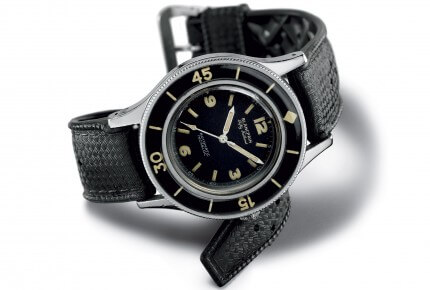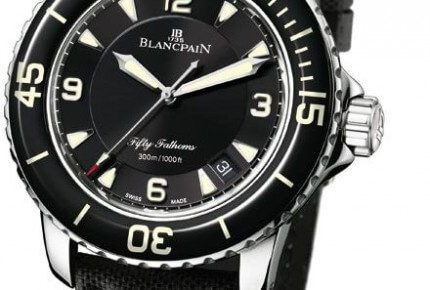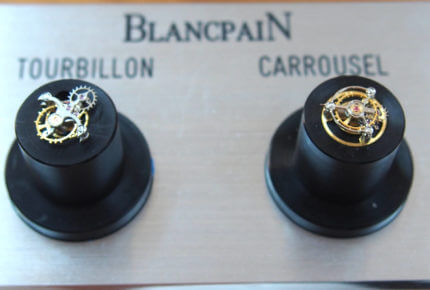About an hour’s drive north of Geneva, the breathtaking Joux Valley plays home to Blancpain. Nestled in the Jura Mountains, the Joux Valley, with its quaint villages such as Le Brassus and Le Sentier, has long been the cradle of Swiss watchmaking. It was here during the long winters that many a farmer set up watchmaking shops in their homes to keep busy and to help financially. Such was the case with Jehan-Jacques Blancpain, who in 1735 established his eponymous watchmaking brand on the top floor of his house in Villeret, another small village in the Jura. The manufacture would later find its ‘forever home’ in this earthly paradise that the Swiss call La Vallée de Joux.
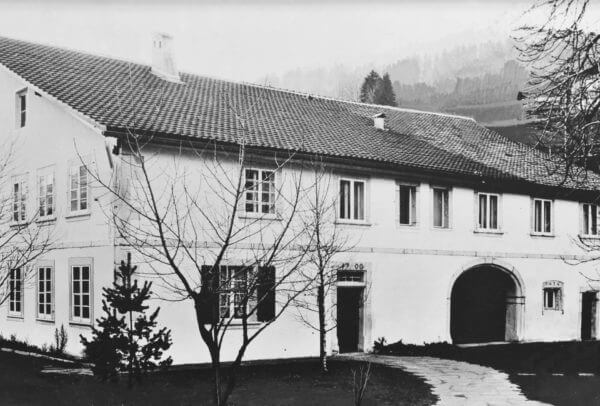
A little Blancpain history
For years, the brand was passed from generation to generation, always with new innovations and inventions along the way. In the 1930s, though, upon the death of Frederic-Emile Blancpain, the family firm was sold to two members of the staff, one of whom was Betty Flechter, an apprentice watchmaker who thus became the first woman to own a watch company, which now went by the name of Rayville-Blancpain.
The 1950s were strong years for the firm as it unveiled the famed Fifty Fathoms in 1953, and the Ladybird three years later. However, as the story goes, Blancpain fell victim to the quartz crisis in Switzerland. In 1983, the Rayville-Blancpain name was sold to Jacques Piguet and Jean-Claude Biver along with the Frédéric Piguet Manufacture, one of the last remaining producers of mechanical movements in the Joux Valley. The new owners set up shop in Le Brassus and renamed the company Blancpain SA. It was just a year later that the re-invented firm re-launched as a brand dedicated to mechanical watchmaking, with Biver announcing that Blancpain “never made a quartz watch, and never will.”
I was there at the Basel Fair, listening to Biver’s speech, when the company made its foray into the show and unveiled the grand complication 1735, then the most complicated watch in the world. The brand was steadfast in its commitment to reviving mechanical watchmaking. Years later, when the Swatch Group purchased Blancpain, it held fast to that commitment. Blancpain has been vertically integrated since 2010, when under the leadership of Marc A. Hayek the company fully incorporated Frédéric Piguet SA, now a maker of high-end movements in Le Sentier. Today, Blancpain’s workshops are located both in Le Brassus, where a portion of the space is an original farmhouse, and in Le Sentier. In these facilities, several hundred staff members, R&D teams, master artisans and watchmakers work their magic to continue the Blancpain brand.
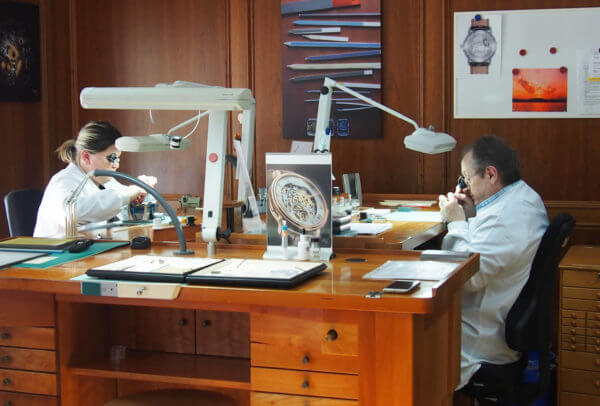
Inside the Manufacture
As mentioned, we received a private tour of both workshops where high-tech machinery and top-trained craftsmen deftly blend the brand’s centuries-old heritage with cutting-edge technology. Blancpain makes the majority of its watches in-house. In fact the watchmakers even make the majority of their tools in-house in order to suit the brand’s very specific needs. One such tool is the machine that is used to make the Geneva stripes in the style Blancpain wants. The process, done by hand-pressing the machine into the metal to form the waves, makes each piece unique. It took the brand’s watchmakers two years to develop the machine, which uses wood from a fallen tree in the garden outside the workshops. But don’t let the old-world charm of crafting tools fool you. The brand also has an incredible financial investment in top CNC and other machinery dedicated to precision cutting, drilling and cleaning of component and watch parts. From the plates to the bridges, oscillating weights, discs, and more, the brand makes it all in-house.
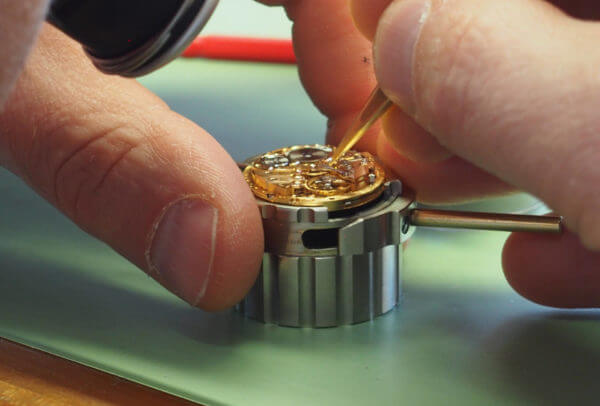
After viewing the massive tool room, we walk through the first stages of component making, where automatic presses cut the rough blanks that will serve as baseplates. It takes a long time for a technician to set the machine, but once set, it can cut 100 to 150 pieces per minute, translating to 5,000 pieces in half an hour. Each plate is then hand-checked by a person before going on to being milled. The machines that do the milling (placing the holes into the plate where the components will be fitted) can perform 18 operations at the same time. This is a good thing because, depending on the watch, a single plate can have as many as 100 milling steps. After milling, the plates are checked again on precision equipment for accuracy. Then, robotic machines that cost about $2.5 million each clean the baseplate of excess metal, via 36 or more different operations.
Whereas every movement component goes through similar stages of cutting, some parts are cleaned via seven different baths while others need as many as 20 before being ready for assembly. At Blancpain, approximately 700 people comprise the manufacturing and tooling part of the business. According to Blancpain a single component can have up to 50 steps in its making, and it can take six hours of work to make one piece. So, if you have a watch movement with 300 pieces in it, for instance, it took about 1,800 hours to make those parts. This alone helps to understand the cost of a Blancpain timepiece and we haven’t even touched on all of the hand-craftsmanship yet.
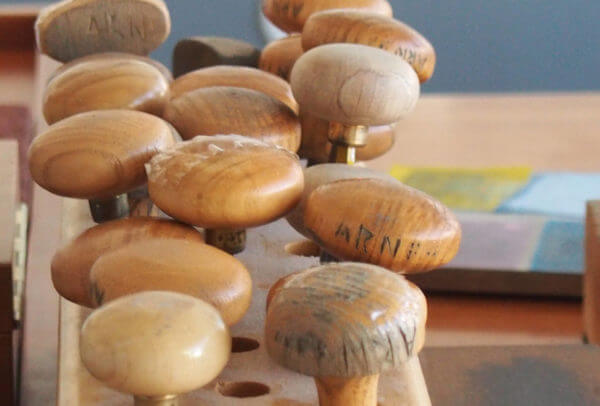
Traditional finishing
Once all the parts have been made, quality-checked and quality-checked again, they all go to the master artisans and engravers who perform the fine decorative finishes. These are all executed by hand using traditional files and tools, which ensures that each watch has its own unique finish. Even the parts that are not seen are properly finished. Among the special finishes are Geneva stripes, chamfering (beveling), polishing, circular graining (it takes about two days to make the circles on a single piece), snailing and more.
The finishing of components can take weeks or, in the case of the Minute Repeater caliber 332, an entire month. Finally, the parts are ready for assembly. Depending on the complexity of the caliber, different watchmakers take over the tedious job of hand-assembling the hundreds of parts that comprise a movement. One of the most fascinating portions of the Blancpain workshops is the complicated watches department, where one single master watchmaker creates a piece from beginning to end.
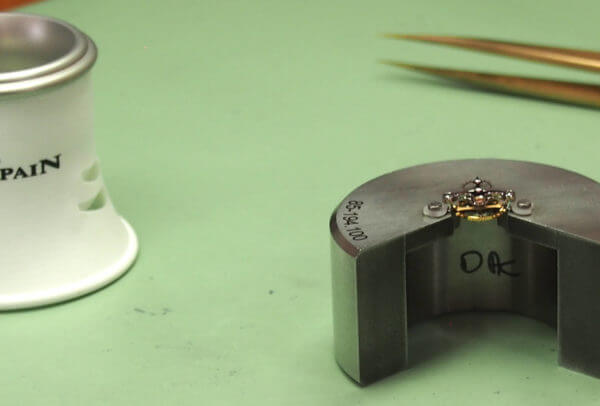
Blancpain’s complicated watches include the Carrousel (an 1890 invention that the brand brought back into being in 2007), a host of Tourbillon watches, the Tourbillon Carrousel, minute repeaters, complex calendars and grand complications.
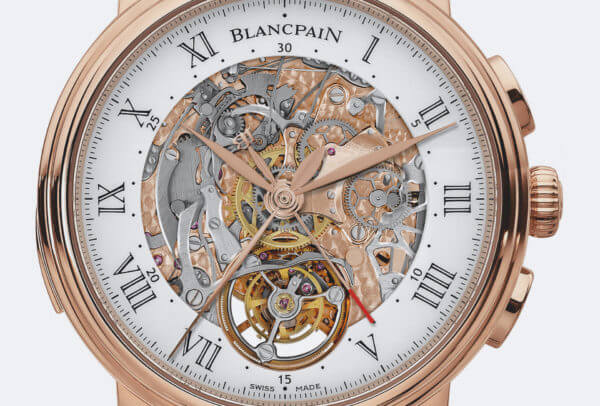
It can take weeks, even months, for one watchmaker to complete the assembly of a single movement. The smallest minute repeater Blancpain creates, which has 350 parts, takes up to seven weeks to complete. Special attention is paid to the cathedral gongs that wrap around the movement one and one-half times to create a stronger sound. Each repeater is tested not by electronics, but by ear to ensure a melodious sound with ample strength.
Once the movement has been assembled and regulated, oiled and lubricated, the dial, hands, case and crystal are finally each put into place by hand. It should be noted that Blancpain also has master artisans on-premises for hand-painting and hand-enameling dials, most of which can take a month to complete. In short, a tour of the Blancpain Manufacture opens our eyes to the longevity of the brand thanks to its preservation of old-world watchmaking, incorporation of cutting-edge technology, innovative research and design, and a visionary view of time and watches.


















